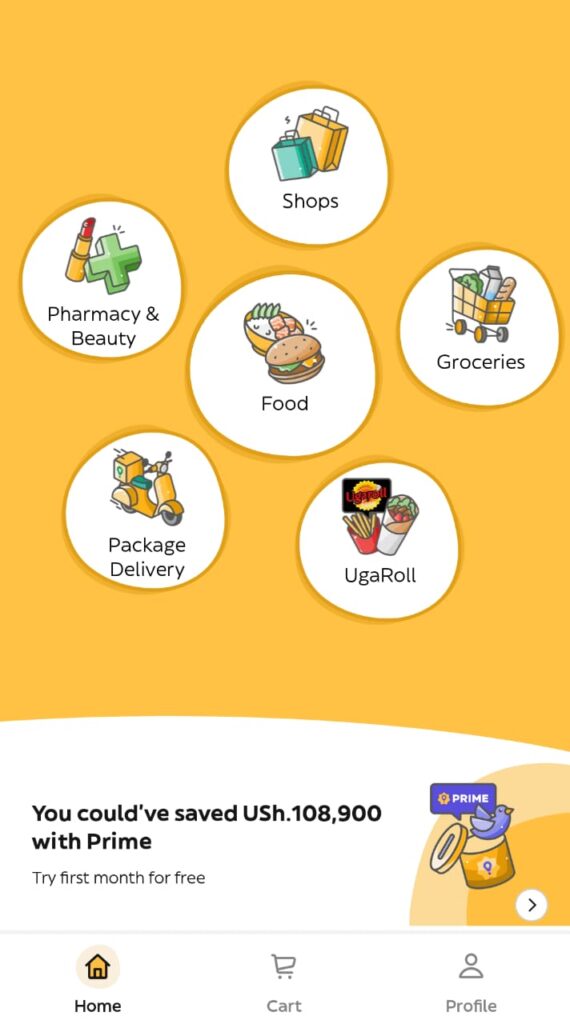By Ian Ortega
I have been reminiscing about the early days of food delivery in Uganda. Well, the first time when someone had a chance to go onto an app and order food. I remember placing my order on Hello Food, that time I was based in Naalya. There was a visa card payment option, the other option was cash to the delivery guy. The process then was still mechanical. Mobile money services had not been integrated in the app payment systems. There was no way to track the progress of the order. It was more work than convenience then. I remember the first order arriving somewhere after an hour and a half. But I was excited. It was finally happening.
Prior to this. There was one other way to having a food delivery at one’s premises. You called your boda guy and sent them to your favourite restaurant. They would make the order, wait for it then deliver it. Alternatively, you called the restaurant, placed your order then they got a boda guy to make the delivery. This default format is still largely present and older generations (read, not Gen-Zs) do prefer it.
Fast forward to 2025, Jumia dropped its food delivery segment leaving the market largely to Glovo. Glovo could be described in more apt business language as a platform courier business. Platform in the sense that it builds an ecosystem of diverse players in this food market. On the platform, you have the restaurants, the delivery agents, the buyers, and the financial intermediaries such as MTN Momo and the Visa cards. The exit of Jumia Foods left Glovo with a space of its own to fully occupy.
This is not to say that Glovo is a sole player, although it’s currently the dominant player. There are other players such as the restaurants with their own fully-fledged delivery systems such as Café Javas. The Café Javas delivery model is an interesting one to watch and learn from. There is also Safeboda, Bolt Food and KFC Uganda.
It’s also important to note that the food delivery market is concentrated around Kampala and its suburbs. Thus, one is likely not to find a food delivery app even in the big cities such as Gulu or Mbarara. Although various people have tried to innovate in-city apps for such a purpose. There’s Jinah Foods in Arua, but one is safer to say, it’s in the early days, and all these are still lofty dreams as there’s not a sizeable base to justify food delivery app in such areas.
But is Glovo Foods breaking even?
To answer this question, we must understand what’s entailed in a food delivery process.
For a journey under one kilometre (from buyer to restaurant), for an order of UGX 33,000, Glovo charges around UGX 1,500 for the delivery and UGX 400 for the services. It seems, that Glovo charges flat fees for given distances regardless of the size of the order. However, when the distance increases, Glovo maintains the services fee at UGX 400 while the delivery fees get increased. Delivery fees can go up to UGX 5900. On the other hand, Café Javas has this flat UGX 7000 delivery fee for most of its delivery distances. It looks like; the two platforms are playing different strategies. While Glovo aims to capture the market by being a low-cost provider, Café Javas is betting on its differentiation, on the quality of the delivery.
However, when a person orders via the Café Javas platform, they get a chance to accumulate points. These points can always be reclaimed when one makes the next order. Again, this is an incentive to keep someone within this platform ecosystem.
What does the customer really want from a food delivery app?
Everyone will argue it’s convenience. But convenience is expressed through some metrics. It is both pricing, speed and quality of the delivery (state in which the order is delivered). The least order delivery timelines on glovo are for 20 to 30 mins while the highest range in the 45 to 55 mins with extremes also of 70 to 80 mins. However, on average an order can be expected to take 30 to 45 mins. Will there be a time when orders can get to a client below the 20-minute mark?
I want to argue that when Glovo converges to below the 20-minute mark, then it will be the real-take-off that will see food delivery go from being a mere small-sized market in Uganda to a food delivery industry. At present what exists, is a market but not an industry. Players keep joining this market, get burnt and move out with coiled tails.
I also argue that the below 20-minute mark will require densification. Whether through, more small players with pre-cooked meals, presence of dark restaurants; densification through increased suburb populations (growth in apartment models) thus making it easier to bundle up orders; more walkable and rider-friendly suburbs, making it easy for university students or those in vacation to side-gig as delivery guys; an improvement in the mapping systems; increased adoption of digital money e.g Bank of Uganda launching its digital currency to mention but a few.
What is the size of the market for food delivery in Kampala, Uganda? Does it make sense for players to derive advantages from scale? Do the unit economics make sense for the different players in the market?
We can assume that now, Glovo is still loss-making in Uganda as the volumes do not yet enable it to break even. The biggest percentage of the payout goes to the riders who get up to 60% of the UGX 1500 and this will vary by distance and time. About 25% is retained by the Glovo platform to cover the app infrastructure, marketing and administration costs, the other percentages then go to the tax authorities and other operation costs such as customer support and insurance.
For Glovo to break even, two things must happen, first the volumes must grow large and secondly, the delivery distances should grow shorter. Food Delivery is a game of density, basically, how many orders within close range of each other, can the platform process within a given time set? It’s also a journey that must be travelled together with the restaurants. If most restaurants can be brought within similar efficiencies when it comes to meal preparations, then one rider can be able to bundle up numerous orders.
These are initial thoughts, perhaps a signal that the food delivery market is something we are now tracking on our radar. We are interested.
Post-Notes:
- When will it be possible to originate and finalize a food order within Whatsapp? Or within any other social media app? This is the next step change for online platforms, to allow users stay within their social apps while still interacting fully with platforms.
- Does the EV era make it cheaper to make deliveries? A transition to 100 percent e-bikes for all deliveries? Does it square off-cheaper than a petrol-fuel bike delivery?
- Glovo and other food delivery platforms are beam lights into the challenges of last-mile logistics in emerging economies. What can we learn from how they go about solving around the constraints of last-mile logistics?

